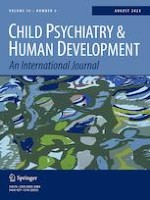22-01-2022 | Original Article
Children's Resilience to Ongoing Border Attacks: The Role of Father, Mother, and Child Resources
Gepubliceerd in: Child Psychiatry & Human Development | Uitgave 4/2023
Log in om toegang te krijgenAbstract
To understand children's resilience to ongoing violent border attacks (low PTSD symptoms and internalizing/externalizing behavior problems, and high sense of coherence—SOC), this study examined a multidimensional model of protective resources. This model comprised factors at the family level (fathers’/mothers’ coping strategies and SOC) and at the individual level (children's coping strategies and attachments with father/mother). Participants were 251 Israeli father-mother–child triads living near the border with Gaza (children ages 9–12 years). Preliminary analyses indicated children’s prevalence of clinical PTSD was 6%. SEM analyses revealed the theoretical model’s high fit with empirical data, χ2(1) = .00, p = .99, CFI = 1, TLI = 1, SRMR = .00, RMSEA = .00 [90% CI (.00, .00)]. More significant paths emerged between fathers’ coping resources and children’s resilience measures than for mothers’ coping resources. Results also pinpointed the significant role of children’s parental attachments and coping strategies. Discussion focused on the unique value of father, mother, and child risk/protective factors for explaining well-adjusted functioning among children living in conflict areas.
